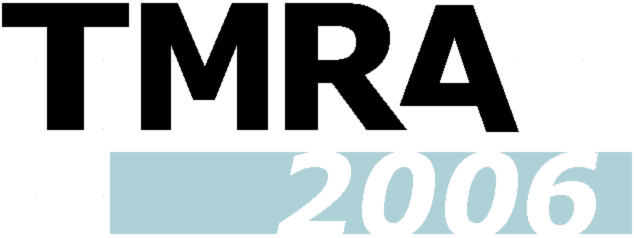


|
September 29, 2006
|
|
The proceedings of TMRA will be published by Springer in the LNAI series.
read more... |
|
September 29, 2006
|
|
Topincs is online for collaborative tm-blogging of TMRA 2006.
read more... |
|
July 27, 2006
|
|
The registration of TMRA 2006 is open. Please be aware of our early bird registration fees due August, 15th.
read more... |